Today, I am reviewing another great alto saxophone mouthpiece by Ken Okutsu at Okutsu mouthpieces in Japan. This is a new custom model called the “Vincent Herring Custom”. Vincent Herring is a great alto sax player, if you haven’t heard him, do a search on iTunes and check out some of his recordings. I put up a transcription of an alto sax solo of his on “All the Things You Are” about a month ago if you want to check it out.
I have reviewed a number of Ken Okutsu’s tenor and alto saxophone mouthpieces before and was very impressed with all of them so when I heard Mr. Okutsu had a new custom alto sax model that Vincent Herring loved I had to try it.
Ken Okutsu Vincent Herring Custom Alto Saxophone Mouthpiece
Here are some quotes and information from the Okutsu website about the Vincent Herring model:
The Testimonial from Vincent Herring
“You will never find a better one.”
After a few years of working with mouthpiece makers I finally have one that is great!
I have only committed to playing 3 mouthpieces as a professional saxophonist. A New York Meyer 5 that I got from one of my saxophone teachers (Dave Peterson) in the late 1970’s. A prototype from Vandoren that ended up being 1 of the 3 hand made mouthpiece they used to make the current popular V16 in the 1990’s, and this new one made by Ken Okutsu in Japan. EXCELLENT!
For all of the hundreds of people that email me about mouthpieces, I can say with confidence “This is the one”! For years people asked me to put my name on a mouthpiece and I would not do it, until now! When you play this mouthpiece please send me feed back! If you like or love my sound, Cannonball and Phil Woods consider your search for a great mouthpiece over!
(Mr. Herring is using 6L tip opening size.)
Features
- Small chamber with narrow throat. It makes more focus tone.
- Long facing. It makes free-blowing and flexible playing feel.
- Brass shank ring. It makes heavier tone.
- Medium rollover baffle and concave side walls.
- Matt finish.
- The beautiful vintage sound.
- All mouthpieces are crafted by CNC machinery for incredible accuracy and finished by hand carefully.
- Concave table. It makes the tone full and rich. The practical life span of reeds is lengthened.
- Material is the highest quality ebonite (hard rubber).
Ken Okutsu Vincent Herring Custom Alto Saxophone Mouthpiece
The Okutsu Vincent Herring 6L has a tip opening of .075. The chamber is smaller than a Meyer medium size chamber but I would not say it’s a “pea-shooter” type chamber like some other small chamber mouthpieces I have played. The side walls are scooped and it looks to have a medium rollover baffle to it.
The side rails and tip look even and clean. The table is advertised as concave which is touted as a good thing on the Okutsu website: “Concave table. It makes the tone full and rich. The practical life span of reeds is lengthened.”
I’m not sure if there is scientific proof to back this up but it is interesting. I am curious why it would make the tone fuller and richer. Also, why would it increase the life span of a reed over a flat table? I did a search online and coincidently found a page where Mr. Okutsu attempts to answer these exact questions. The Okutsu website gives this explanation:
The Best Table Is Not Flat
The Table is the part of the mouthpiece that the reed is clamped onto by the ligature. Okutsu Mouthpieces make all tables very slightly concave from front to back. The concave table makes the tone full and the lives of the reeds long.
The facing curve begins at the split point of the side rails, as shown in the photo below. For the combination of a mouthpiece and a reed, it is the most important to make no leaks at the break points.
The break points are fulcrums of the vibration of the reed. If there are any slight leaks, the reed can not vibrate efficiently. The sound become dull and stuffy and maybe with many squeaking error tones.
The concave table is the equipment which the high quality mouthpieces have traditionally to avoid the leaks at the break points.
When the reed is clamped on the concave table, the reed is bent slightly by the pressure of the ligature. This causes the reed and the mouthpiece to push against each other at the break points.
Used reeds become warp by the moisture. When the warp is slighter than the concavity on the table, the influence of the reed warp is canceled. It is the advantage of the concave table. It makes the tone full and the practical life span of reeds is lengthened.
Some mouthpiece makers and refacers insist that the perfect flat table is the best design. I don’t agree with the opinion. The perfect flat table is suitable with only the perfect flat reeds. But used reeds with flat back are very few.
Whoa! This is worthy of a whole other blog post to discuss, I love this stuff………..
Ken Okutsu Vincent Herring Custom Alto Saxophone Mouthpiece
Regardless of the discussion about the best surface for a mouthpiece table, I will admit here and now that I feel there is something special and unique about the Okutsu mouthpieces I have played. There is a certain character and response that they have that is different than many of the flat table mouthpieces I have collected. I’m not saying it is better or worse but just that I perceive it as different and unique. I don’t know if it is even the table or something else but they have a certain character and individuality to their sound.
The Okutsu Vincent Herring Custom mouthpiece had a tone full of character and substance in my opinion. There was something about it I really loved. A graininess and richness to the tone. It had a bit more “pushback” than many mouthpieces I have played. When I write “pushback”, I am referring to a type of resistance where I feel the air that I’m blowing hit some resistance and I feel a back pressure in my mouth, cheek and throat. It’s not a bad resistance at all, please don’t get me wrong, it’s more like the air column through those body parts is full and has some pressure. Not too much to cause discomfort but just enough that any slight adjustment or manipulation of the throat, tongue and mouth have an immediate impact and affect on the tone that is being produced.
On the contrary of being unpleasant, this is a really cool feeling. It feels like you have more control and that it’s immediate and quick. I loved it.
Ken Okutsu Vincent Herring Custom Alto Saxophone Mouthpiece
The upside to the smaller chamber is that you get some good power and focus to the sound. The downside for me and my Selmer Reference Alto is that the smaller chamber tends to make the middle D,Eb,E and F notes on my alto a bit sharper. This is a bit of a drag as I usually try to stay away from smaller chambers with my Selmer alto but……..this mouthpiece plays so well that I think it might be worth living with and adjusting to.
The Okutsu Vincent Herring alto sax mouthpiece has a full powerful sound with loads of character in my opinion. Character can be tricky to define and describe, all I can say is that some mouthpieces are very pure sounding. You hear the tone and it’s clear and clean if that makes sense. Others, like this one have certain elements in the sound. It’s like a graininess that make it sound richer and fuller to my ear. For me, it is like the difference of being blindfolded and rubbing your hand across a mirror and then rubbing across a stucco surface. The stucco feels more interesting and filled with character if you know what I mean. I know, I have lost some of you with my analogy but that is my experience. I really loved playing this mouthpiece.
Ken Okutsu Vincent Herring Custom Alto Saxophone Mouthpiece
I used a 3 medium Rigotti Gold reed on this mouthpiece. I took the reed out right before a Skype lesson I had and it was a bit hard for the mouthpiece but wouldn’t you know that by the end of the lesson it played perfectly. I then played it on the mouthpiece for another three days before recording the sound clip below. There is a lot to say for breaking in a harder reed…….
In the sound clip I’m playing quite a few lines from the Tim Green Blues solo I posted a few days ago. I’ve been playing it for the last few days so it is fresh in my head.
I mentioned above how the “pushback” gives a quicker control to the tone. I think you can hear that in the sound clip as I play some of the bends and use vibrato. The tone is even and smooth throughout the range of the horn. The low notes are not as fat and full as a medium or large chambered mouthpiece but they have a compact tight sound to them that is cool I think.
Although I don’t play in the altissimo much on alto, I found it easy to get. Easier than on many larger chambered mouthpieces………
Ken Okutsu Vincent Herring Custom Alto Saxophone Mouthpiece
Thanks to Ken Okutsu for sending me this mouthpiece to review. It was a pleasure to play it, to be honest, I had trouble putting it down after recording the sound clip today. I’m looking forward to playing it much more and seeing where it takes me.
If you like what you have read and like the sound clip, you can contact Ken Okutsu on his website at www.okutsumouthpieces.com.
Let me know what you think in the comments below. Thanks, Steve
Ken Okutsu Vincent Herring Custom Alto Saxophone Mouthpiece
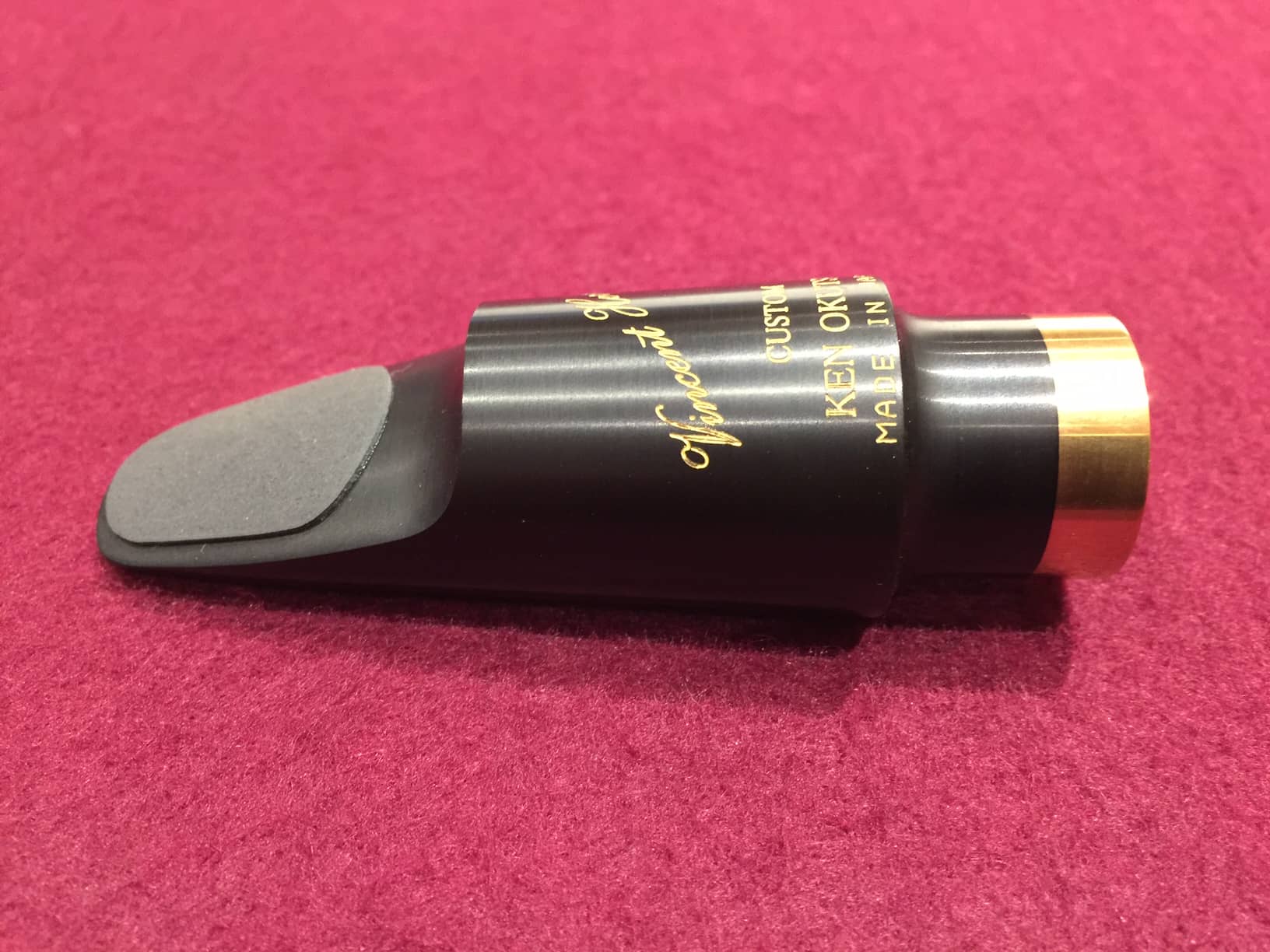
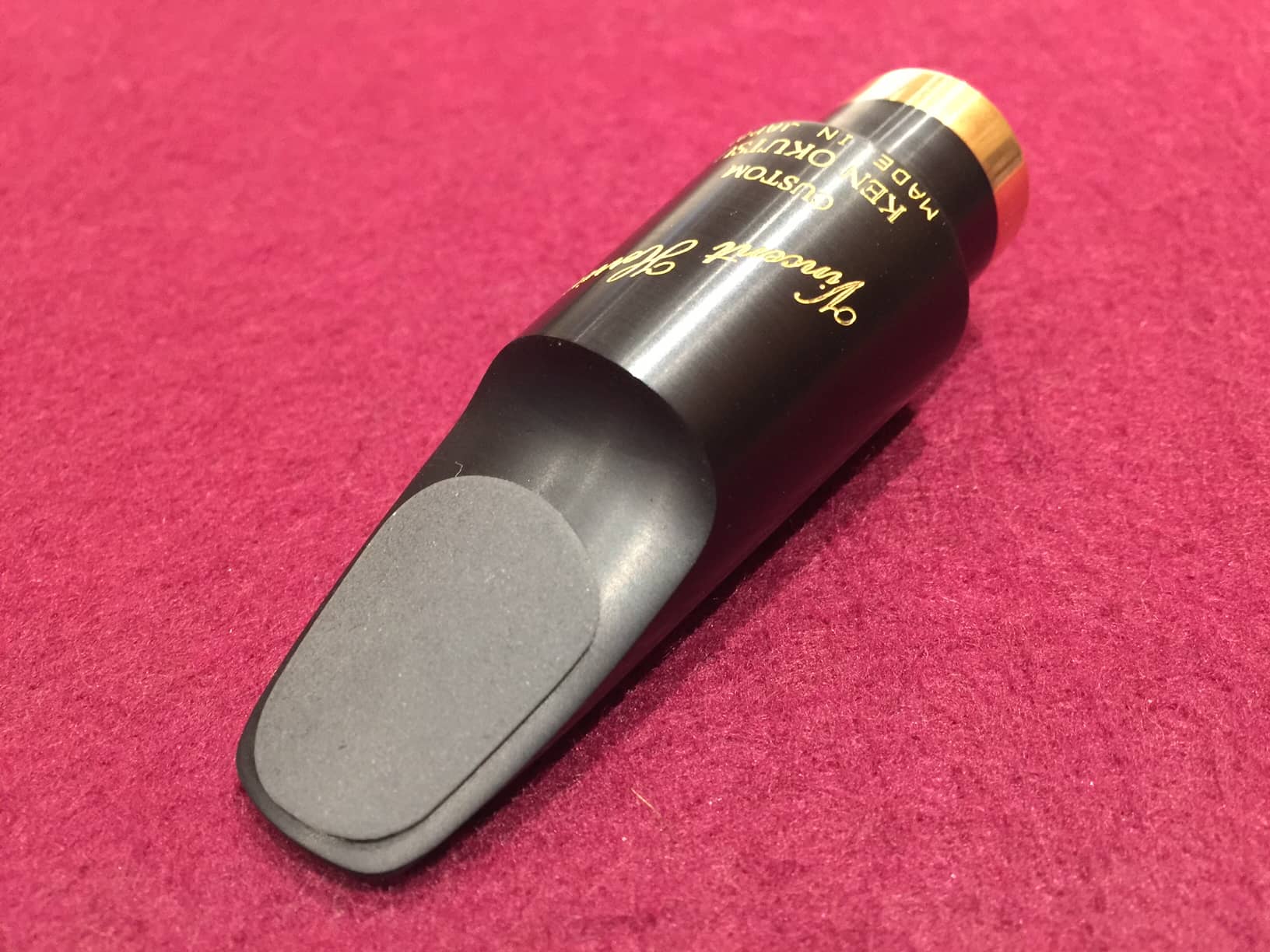

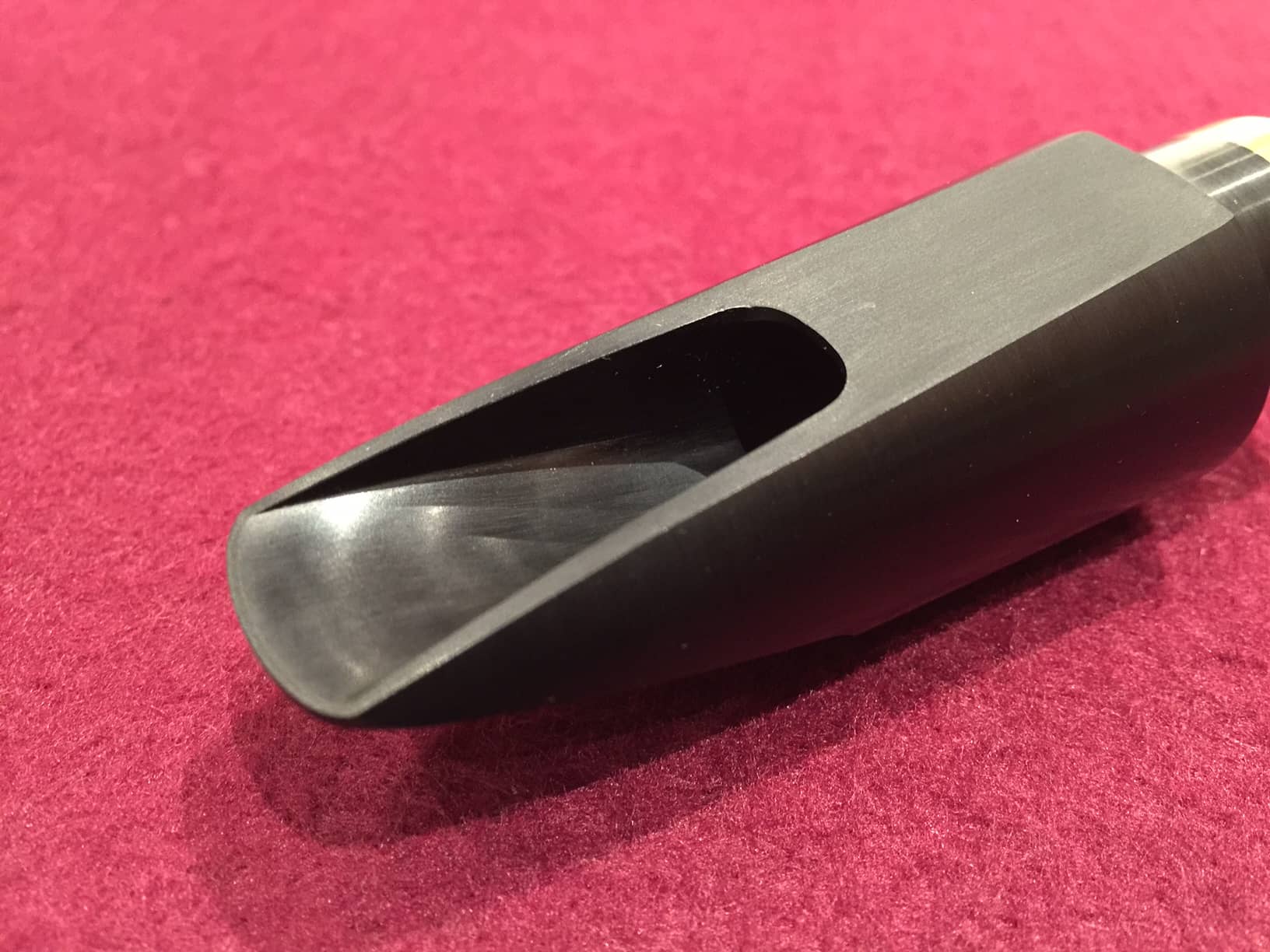
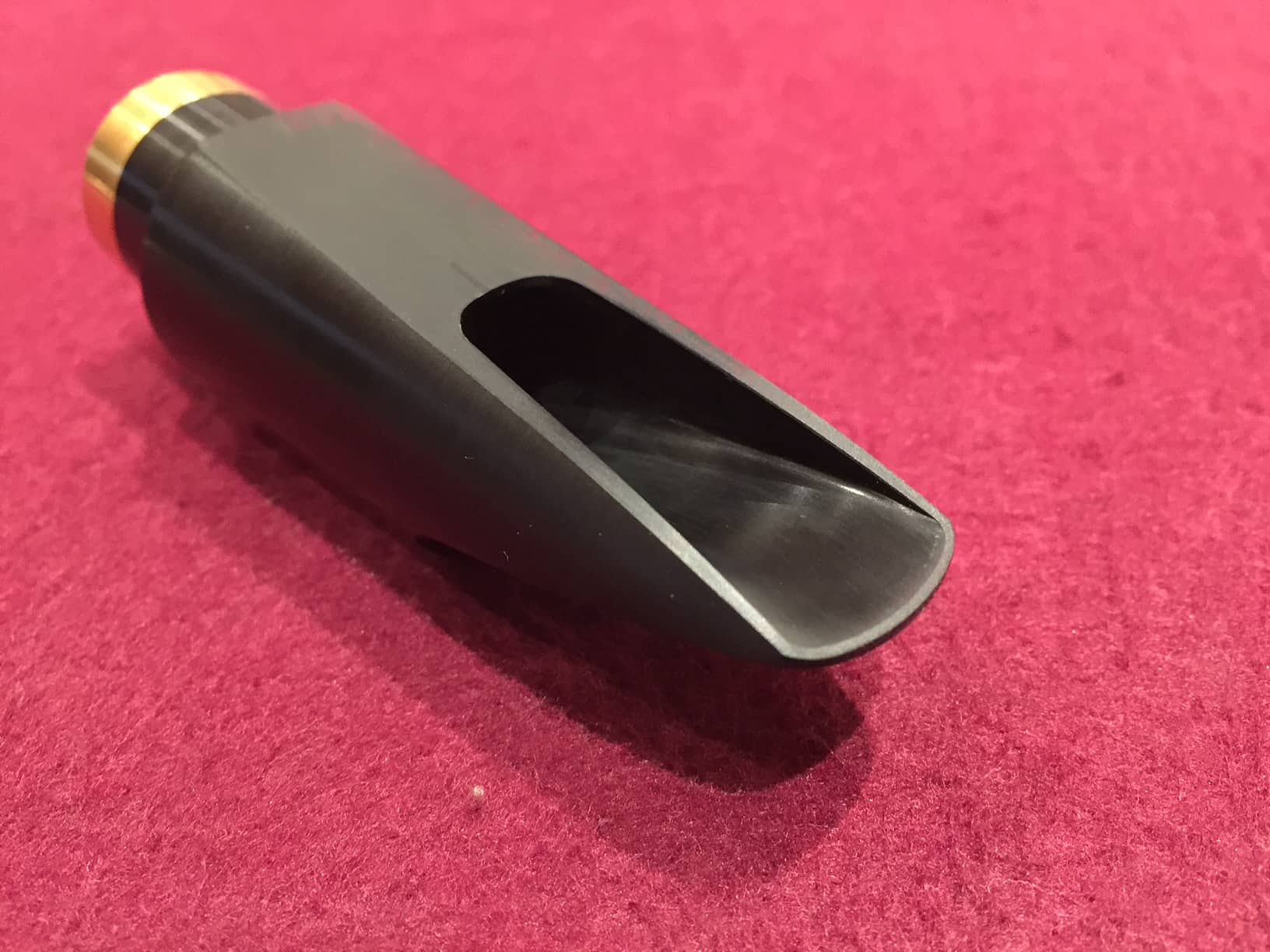
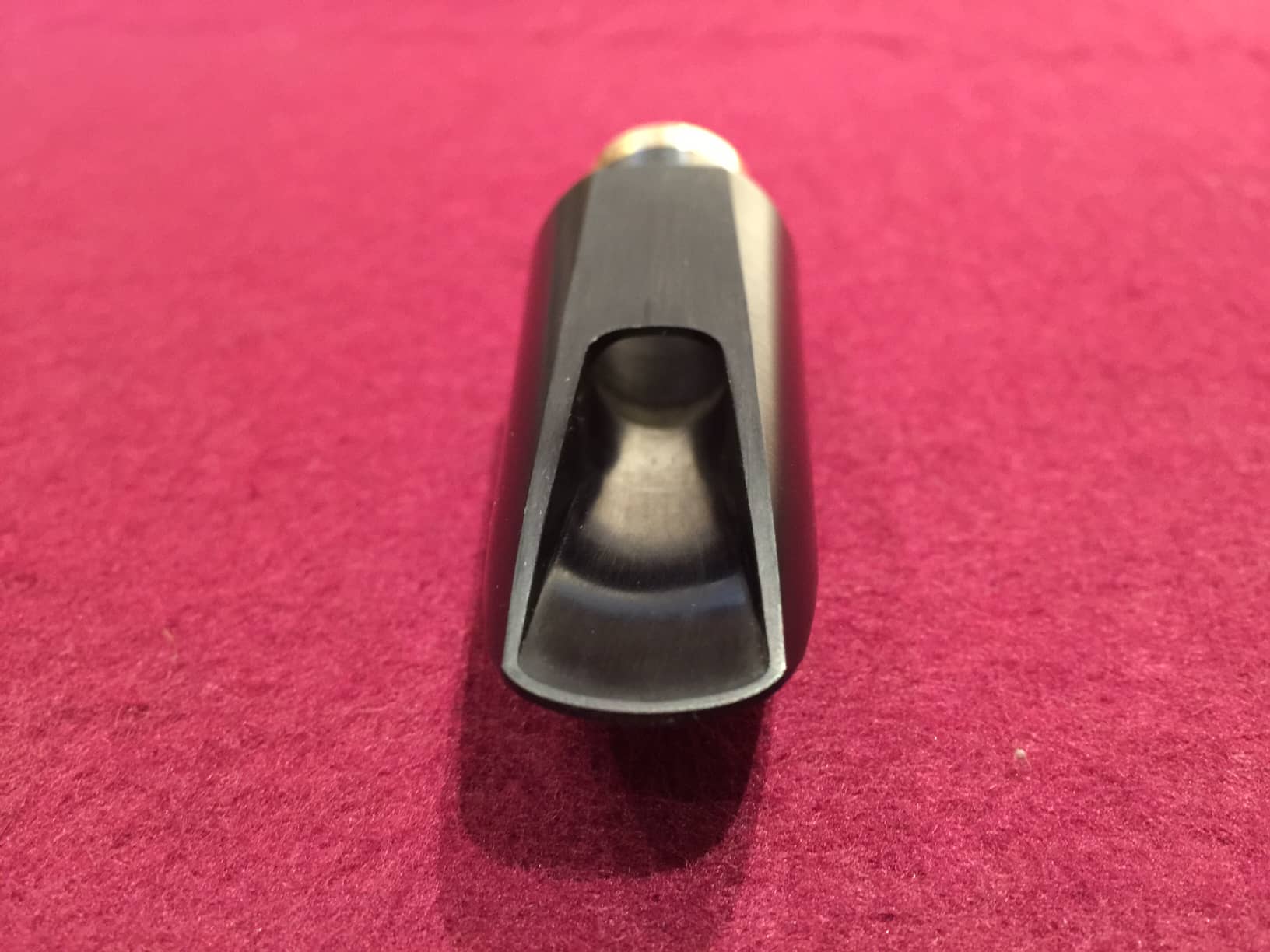



Sounds terrific, Steve! I believe this is the best-sounding alto clip I’ve heard from you. That baby’s a keeper!
Hey Steve, Not my favorite but as usual, you sound great on it! The sound is a bit too compact for my taste. I prefer something a bit more fat and spread. I play a Morgan Jazz 7M with Rigotti 2.5 strong which I think captures that well. Just my ears!
Thanks for the review.
Jeff, No problem. Each person has there own preferences. I have a Vandoren V16 with a super long facing curve that gives me the ultimate fat and spread sound………Steve
I am in the camp that finds this mouthpiece very compelling.
Great response and tone. If you want David Sanborn this won’t do it,
but Phil Woods, and maybe Cannonball, this is the ticket.
Hey Steve! Something about this recording told me you were really enjoying playing this mpc! Question is how do you compare this one to a Morgan Excalibur? From the description, it sounds like a very similar design and similar kind of sound. Thanks.
Steve,
I don’t have the Morgan here to compare side by side but I believe it was brighter than the Herring model I am reviewing here. It played just as easily though. I think I remember it having less resistance also. Steve
I found this mouthpiece to have a very compact and focused sound. A Java 2 1/2 or Rigotti Gold 2 1/2 medium or strong worked well. Steve used a 3 medium and for me that was way to hard… no character or flexibility, but it worked great for him. Its also a loud piece that can really project. Its not inexpensive and although I do like it, I think you could find something that would do the job for less than the about $650 price point. I am still working with this piece and playing it against a Morgan Excalibur 5 and a Theo Wanne New York Brothers 6.
Steve thank you for the positive review of my mouthpiece. It is a GREAT mouthpiece. I know this price is high for some people, but keep in mind Ken is working on each mouthpiece by hand. He sends to me to test. If the mouthpiece is not good I send it back to him to reface and work on more until it will be the best mouthpiece you can buy. You can drive a Honda and it is a great car, gets you from point to point! You can drive a Mercedes 500S it does the same thing ….. but different. There is a difference!
Hi Vincent,
Great to hear from you. I didn’t realize you play test every mouthpiece! That is certainly a commitment on your part. Thanks for doing that and making sure each mouthpiece is the best it can be. Steve
Yes it is true. I test each and every one! Thanks for taking time to review!
vincentherring.com
I like very much; however any MPC you play is beautiful. I may be wrong but, at times, the sound is compact and sharp, it reminds me of something Sonny Stitt on alto thay I like very much!
Is now the world of quality MPCs and saxophones all Japanese?
The Japanese are into creating excellence!
…….if only everyone in the world had that same motivation………
It worries me a bit ‘what Vincent Herring writes, or that he has sent several times back until the MPC was perfect for him! I live in Italy and it would be difficult to send back the MPC Ken Okutsu for tenor, if it does not sound well as those sent to Steve, several times to correct it, it should be perfect in the first test!
Naturally I know that “to play well as” it implies that Steve’s skill is also that, in large part, involved in the sound.
An advice, Steve: I play with a Meyer 6, 0.081 tip opening; do you think that Ken’s minimum size, 0.087 may be fine or, in the case, should I ask him for a 0.084 special order?
Thank you.
I agree with first comment…one of your best sounding mouthpiece reviews.
Hello, I want to share an email that I just sent to you, Mr. Ken Okutsu and Mr. Vincent Herring.
Hello, I am writing from Spain to thank you and congratulate you for the mouthpiece you have made. I have been studying alto saxophone for three and a half years. I live in a town where there are no teachers, so I have only taken a couple of classes in neighboring cities. My progress has been very slow and many times I have felt that I would not make it. I am 40 years old and have no previous experience with music, so thought it would not be possible to make it for me.
From the beginning, I have bought a professional saxophone and many mouthpieces from the most reputable manufacturers, sent to refacers with the desire to improve, but even so my daily practice was made painful by my poor performance, I thought it must definitely be just me.
Then, I saw the Vincent Herring model number 092 mouthpiece, and I thought I should try one more time. The mouthpiece came to me yesterday and I wanted to write to you immediately. I decided to wait one more day to calm my excitement, but after today’s practice, it has only increased. I wanted to share my joy with you. I am perplexed at the difference, I will try to describe the biggest technical difficulties that I had and that have changed immediately.
It was impossible for me to get a homogeneous sound, I could have divided my sound into 4 or 5 “types” depending on the height of the note I played. Some sounded especially different, it would take a long time to describe all of them, the notes of my left palm were very difficult, I ended my practices with my lips cut by the pressure I had to make to sound in tune, my throat no longer could flex any more. I can’t explain the pleasure I feel now of being able to play them until my air runs out, without needing to force myself, just singing long notes. Now I can play pianissimo on any note. My fingers move more fluidly, it seems to be more connected with my mind, since it is not permanently distracted by the differences of what I expected to hear and what I heard. It was impossible for me to practice harmonics, yesterday at the first attempt I managed it with several notes. I try all the reeds and different “methods” of preparation and preservation, none seemed to work, now I can choose the brand based on the “color” of the sound and not the one that is just a little less difficult. I really admire your work and I’m glad to be able to enjoy it. Sincerely.
Steve, I’ve owned this mouthpiece for 6 years. I have the Eastman Rue Saint George EAS 850 alto. I also play the Boston Sax Shop custom beck with it. Add a 2 1/2 blue box Vandoren reed, with a Brillhart copy Tone Master ligature I purchased from Brian at Getasax.com
The sound is huge, and clear!
That’s great to hear. Yes, I agree. This mouthpiece had loads of power and a huge sound!
Hi! Any idea how to get one of these in 2024?
thanks:)